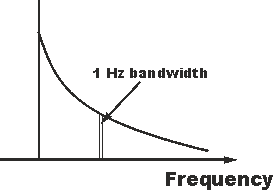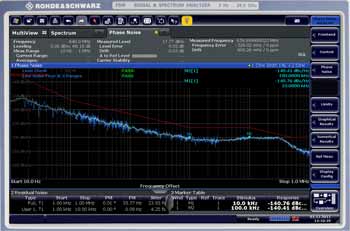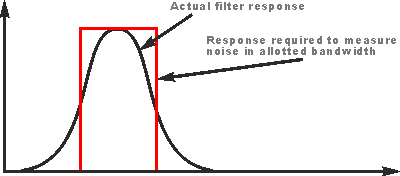Products Category
- FM Transmitter
- 0-50w 50w-1000w 2kw-10kw 10kw+
- TV Transmitter
- 0-50w 50-1kw 2kw-10kw
- FM Antenna
- TV Antenna
- Antenna Accessory
- Cable Connector Power Splitter Dummy Load
- RF Transistor
- Power Supply
- Audio Equipments
- DTV Front End Equipment
- Link System
- STL system Microwave Link system
- FM Radio
- Power Meter
- Other Products
- Special for Coronavirus
Products Tags
Fmuser Sites
- es.fmuser.net
- it.fmuser.net
- fr.fmuser.net
- de.fmuser.net
- af.fmuser.net ->Afrikaans
- sq.fmuser.net ->Albanian
- ar.fmuser.net ->Arabic
- hy.fmuser.net ->Armenian
- az.fmuser.net ->Azerbaijani
- eu.fmuser.net ->Basque
- be.fmuser.net ->Belarusian
- bg.fmuser.net ->Bulgarian
- ca.fmuser.net ->Catalan
- zh-CN.fmuser.net ->Chinese (Simplified)
- zh-TW.fmuser.net ->Chinese (Traditional)
- hr.fmuser.net ->Croatian
- cs.fmuser.net ->Czech
- da.fmuser.net ->Danish
- nl.fmuser.net ->Dutch
- et.fmuser.net ->Estonian
- tl.fmuser.net ->Filipino
- fi.fmuser.net ->Finnish
- fr.fmuser.net ->French
- gl.fmuser.net ->Galician
- ka.fmuser.net ->Georgian
- de.fmuser.net ->German
- el.fmuser.net ->Greek
- ht.fmuser.net ->Haitian Creole
- iw.fmuser.net ->Hebrew
- hi.fmuser.net ->Hindi
- hu.fmuser.net ->Hungarian
- is.fmuser.net ->Icelandic
- id.fmuser.net ->Indonesian
- ga.fmuser.net ->Irish
- it.fmuser.net ->Italian
- ja.fmuser.net ->Japanese
- ko.fmuser.net ->Korean
- lv.fmuser.net ->Latvian
- lt.fmuser.net ->Lithuanian
- mk.fmuser.net ->Macedonian
- ms.fmuser.net ->Malay
- mt.fmuser.net ->Maltese
- no.fmuser.net ->Norwegian
- fa.fmuser.net ->Persian
- pl.fmuser.net ->Polish
- pt.fmuser.net ->Portuguese
- ro.fmuser.net ->Romanian
- ru.fmuser.net ->Russian
- sr.fmuser.net ->Serbian
- sk.fmuser.net ->Slovak
- sl.fmuser.net ->Slovenian
- es.fmuser.net ->Spanish
- sw.fmuser.net ->Swahili
- sv.fmuser.net ->Swedish
- th.fmuser.net ->Thai
- tr.fmuser.net ->Turkish
- uk.fmuser.net ->Ukrainian
- ur.fmuser.net ->Urdu
- vi.fmuser.net ->Vietnamese
- cy.fmuser.net ->Welsh
- yi.fmuser.net ->Yiddish
How to Measure the RF Noises?
By Ian Poole
- Measurement techniques and specifications for electronic or RF noise.
As noise is an inherent element within any electronic or RF circuit, it is necessary to quantify of measure the noise.
By measuring the RF noise it is possible to assess the level and ensure that the system is able to operate satisfactorily.
There are ways in which noise is measured and ways of specifying noise.
These different methods of measuring noise and specifying it will depend on the particular application.
Noise specifications
There are many ways of specifying noise in electronic circuits. The way it is specified depends upon the application.
One of the first ways in which noise was specified was related to radio receivers. Here noise specifications relate to the receiver sensitivity and include specifications including signal to noise ratio, noise figure and the like.
Note on Receiver Sensitivity:
The main limiting factor on receiver sensitivity is noise. Accordingly receiver sensitivity specifications revolve around noise specifications. The chief receiver specifications are signal to noise ratio, SINAD and noise figure. Each looks at the receiver performance with respect to noise.
For many other applications, the noise spectral density is used. This is a measure of the noise power within a certain bandwidth. Noise power density has the dimension of power / frequency.

Noise in 1 Hz bandwidth
Typically the specification is specified in dBm and within a 1 Hz bandwidth, i.e. dBm / Hz.
Interestingly the thermal noise in a 50 Ω system at room temperature is -174 dBm / Hz.
|
BANDWIDTH |
THERMAL NOISE POWER |
|
1 |
-174 |
|
10 |
-164 |
|
100 |
-154 |
|
1k |
-144 |
|
10k |
-134 |
Noise measurement techniques
There are many ways of measuring noise in an electronic of RF system. There are specialised meters for measuring noise figure, SINAD, and other figures. Apart from these, standard test equipment may also be used.
• Meter method: It is possible to utilise a simple meter and other elements to measure noise levels. The concept of noise measurement system can be explained by looking at what is required.

The meter used should have an averaging capability, because the noise level is random and will vary. While most digital meters have an averaging capability, analogue meters inherently average any changes.

Plot of phase noise using spectrum analyser
Noise measurement precautions
One of the easiest ways of measuring noise levels is to use a spectrum analyser. It is able to determine the noise power in a given bandwidth. This can then be related to another bandwidth by scaling the power level measured to the required bandwidth.
However there are other factors to take into account.

Filter responses for noise measurement
Fortunately this is a simple calculation for modern analysers that can give readings of noise power in a given bandwidth - this is often normalised to dBm / Hz.
You May Also Like
What is Electronic/Radio Frequency (RF) Noise
How to Eliminate Noise on AM and FM Receiver

